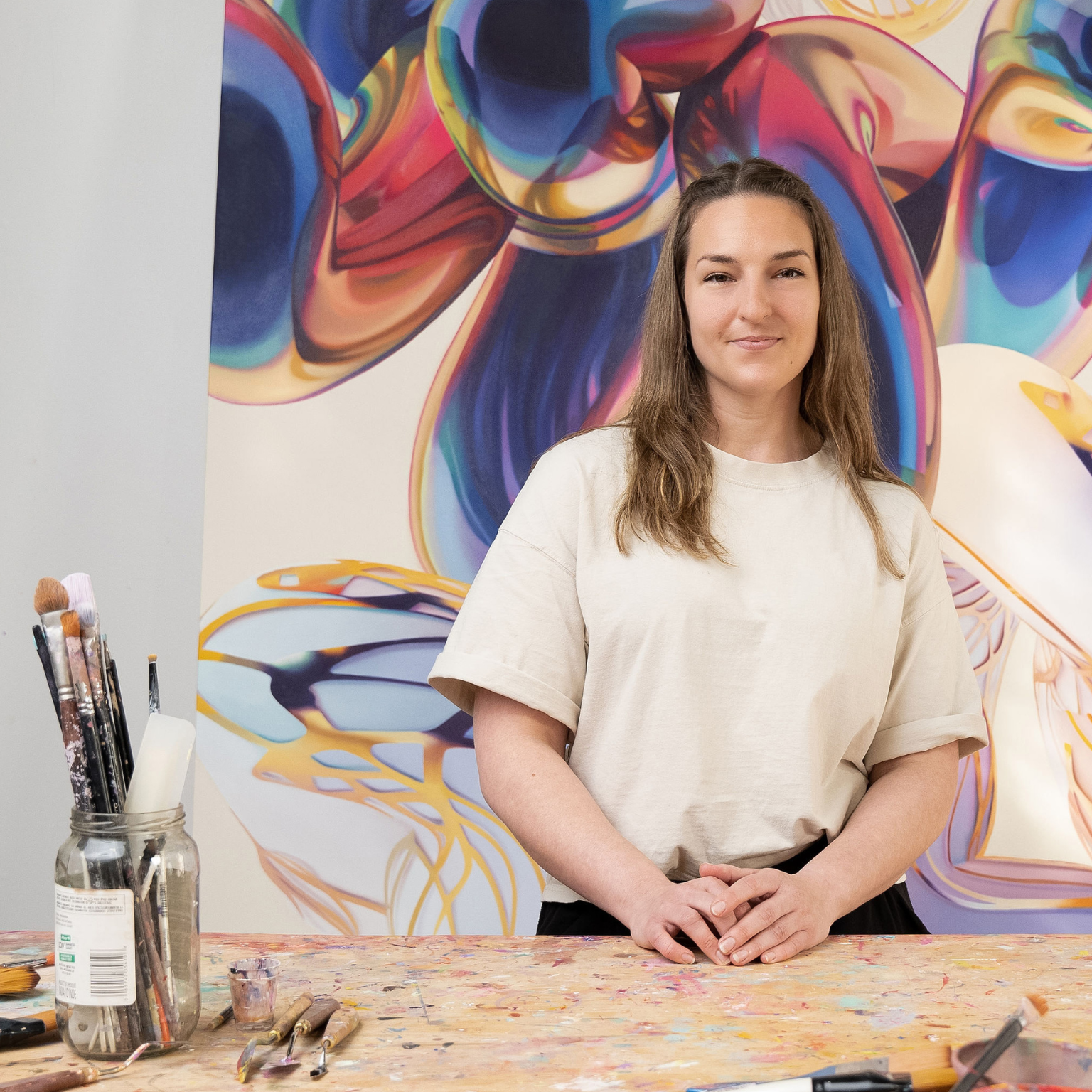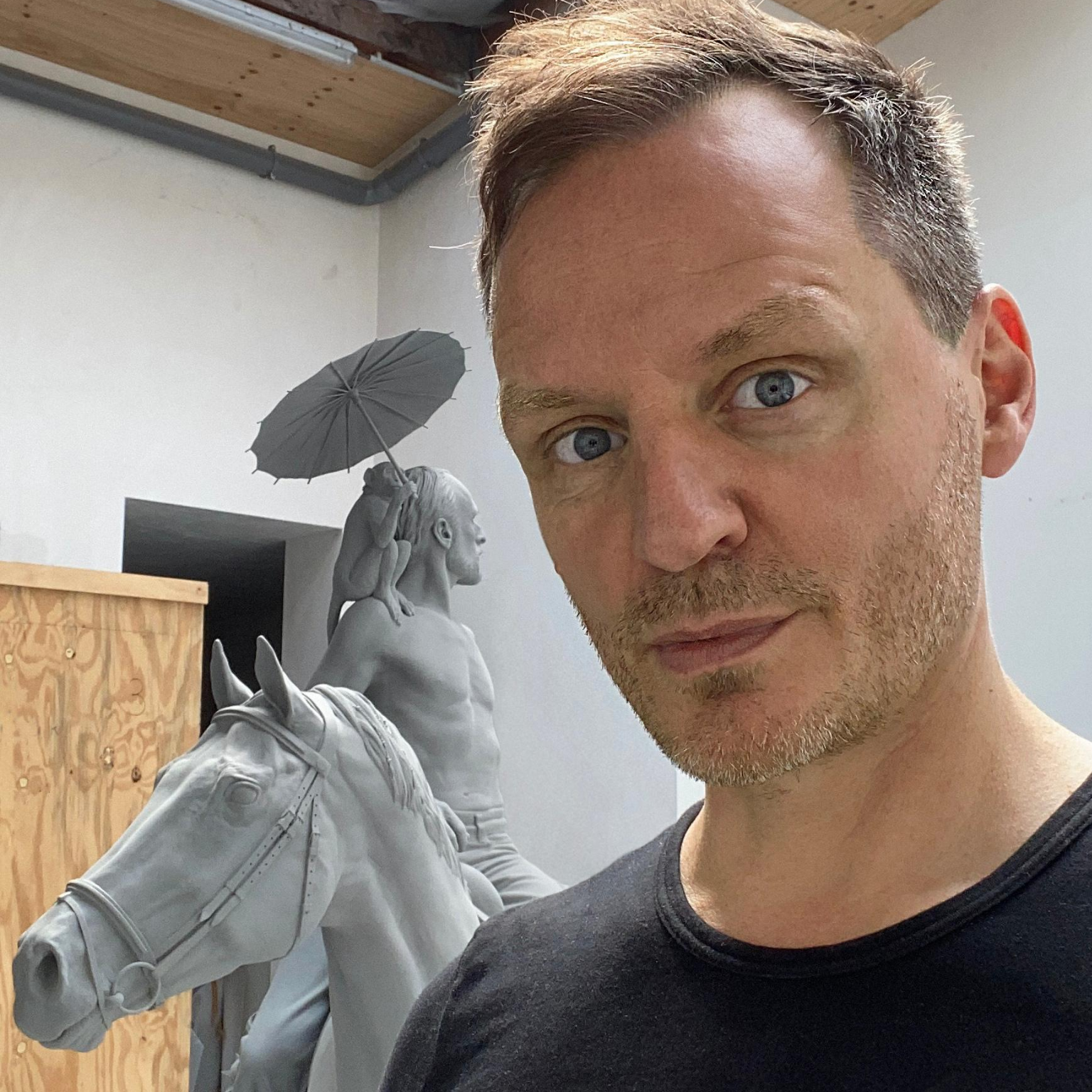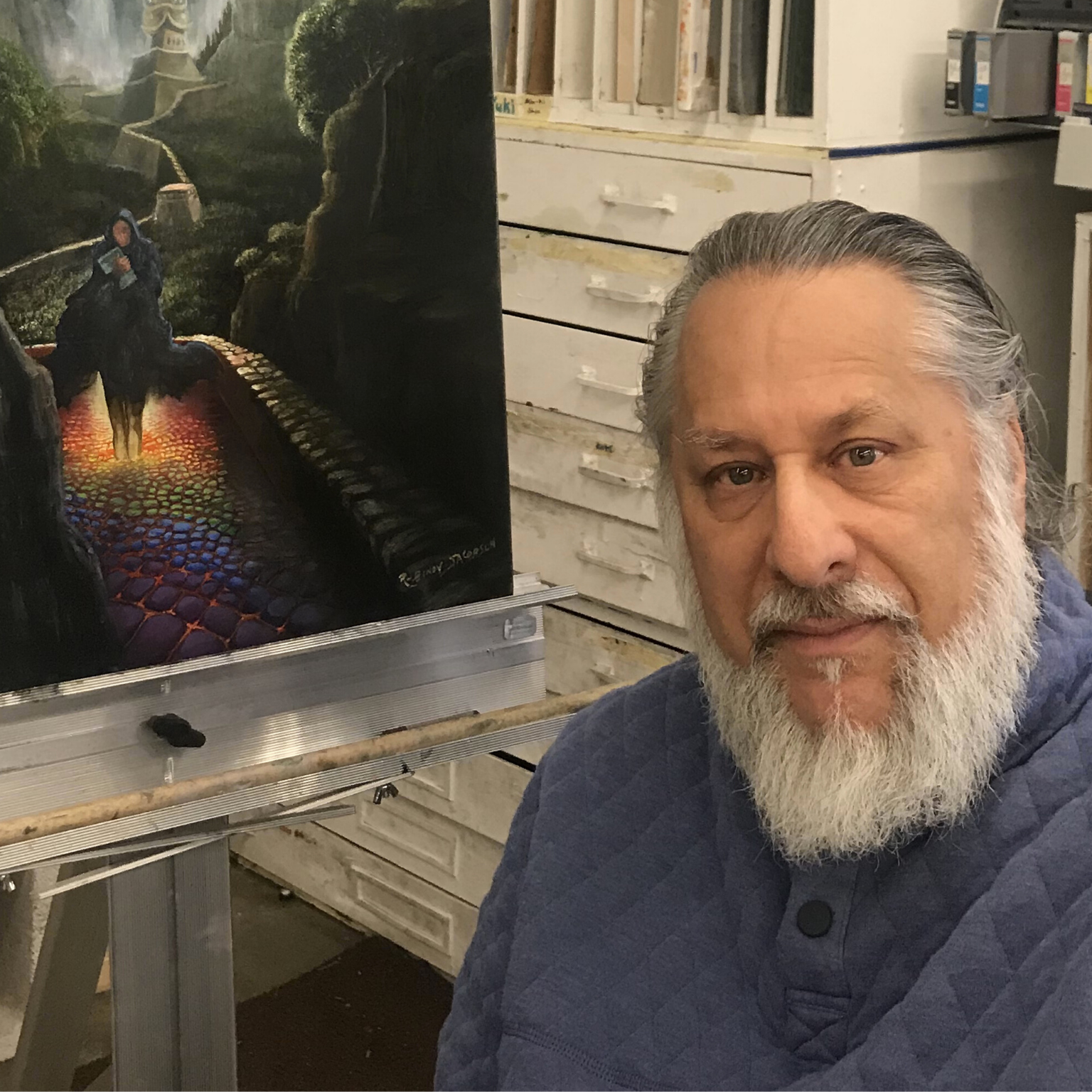Vickie Vainionpää, abstract artist from Toronto, Canada. Photo © Emelle Massariol
Tell us what you do and your beginnings.
I am an abstract painter who’s interested in the logic of the machine and our current post-digital condition. I make oil paintings that use data as a starting point, as a way for the computer to make the first move or gesture in the painting. My investigation is a painterly one, I’m thinking about abstraction and what it means to paint today.
This naturally brought me to digital and generative modes of working. I’m trying to figure out what a painting can be and how to make it; also how to reflect the time that I’m living in (which inevitably straddles this digital and physical divide).
I grew up in Waterloo, Ontario Canada, and have lived and worked in Montreal for nearly 8 years now. Growing up, I was always drawn to art making and I was lucky to have parents that encouraged me. After completing my undergrad, I moved to Montreal and did a few residencies that were very formative to my practice.
Specifically, one at the Banff Center for Arts and Creativity which yielded some real breakthroughs.

What does your work aim to say?
I’ve always been drawn to abstraction, which in itself is really the logic of life. There’s a sort of romanticism about generative and abstract processes: it’s about creating something entirely new, something unique every time a script runs or every time your brush touches the canvas, which is endearing to me.
I think a lot about Bruce Nauman’s quote: “The true artist helps the world by revealing mystic truths”. It’s kind of cheesy, but I’m kind of hopelessly chasing some sort of absolute truth about contemporary existence, and I believe that abstraction can reveal it to me.
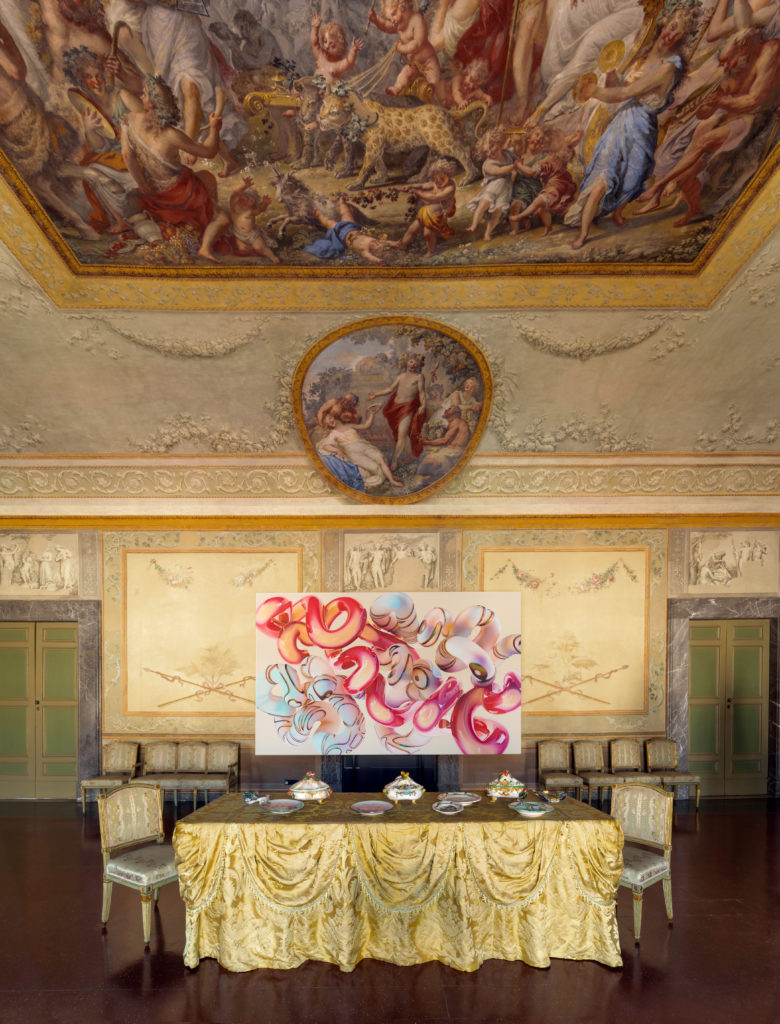
Mondrian also had this idea… that abstraction is actually “true realism”, because contrary to what we usually think (that abstraction is a means to simplify something) abstraction is actually a means to intensify. And “pure abstract art” is in fact the most accurate rendering of life; therefore it’s “true realism”. I really like this take.
For me, I feel I have a duty to reflect the context in which I am living. So I never really had a choice but to attempt to make paintings that meld our physical and digital realities which is not so different from how other painters have worked previously. In reaction to technological advances, we saw Dada and Surrealism emerge, the Impressionists, Futurists, Cubists, Bauhaus, etc. I clearly see that advancements in technology and visual communication invariably pave the way forward for painting. I hope that my work adds something to this conversation.
Where do you find inspiration for your art?
Historically, I am inspired by painters who use tech in their process. Frank Stella is by far my biggest inspiration. He was among the first to use 3D modeling and computer graphics as part of his process. His Smoke sculptures especially (made by digitally scanning the abstract shapes created by clouds of smoke, using them as relief elements in his paintings). Not only that, but his work moved the needle on what we thought the painting was and what it can be.
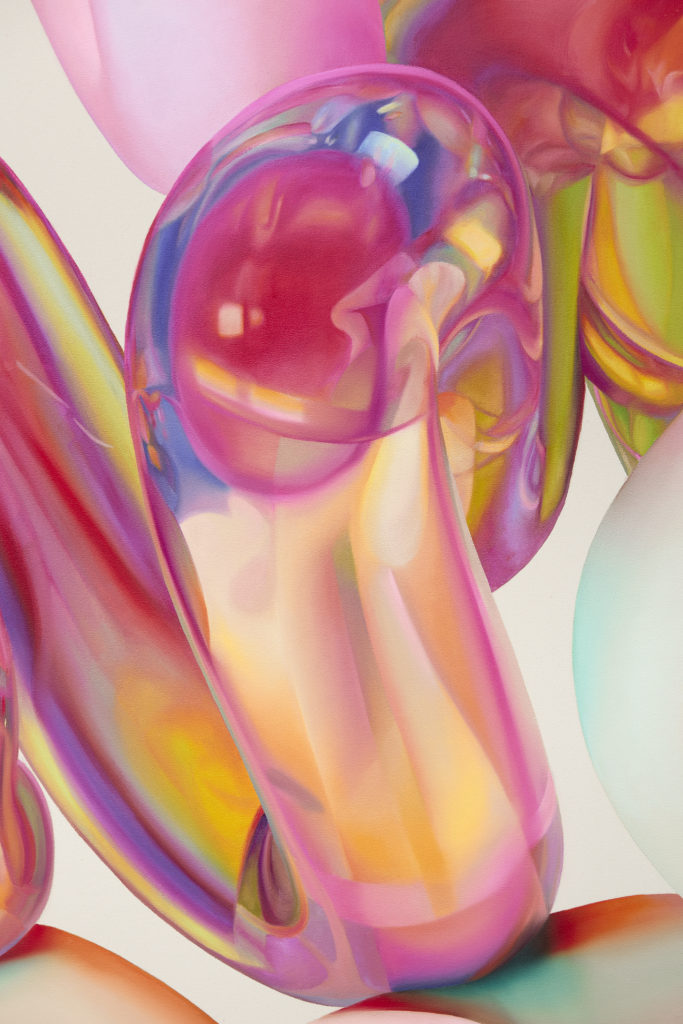
His ethos is also inspiring to me, he never shied away from exploring new ideas and made a long successful career by following his gut. Not many artists can go from minimalism to maximalism so gracefully and live to tell the tale! I am also inspired by the very first abstract painters; Hilma af Klint and Kandinsky.
I’m fascinated by their spiritual lives and how this directly connects to their thoughts about abstraction. Rothko as well. All their works focus on revealing a basic, metaphysical truth of life, and painting is the answer; they all understood transcendence to be non-depictable, and non-representational.
Could you give us some insight into your creative process?
Essentially, I give myself a lot of rules, and then I break them.
My work is the result of a collaboration with the machine. I would describe it as ‘computer-assisted abstraction’. The process starts with randomized data and ends in oil paint on canvas. I use a custom script in 3D software which plots bezier curves, often tens or hundreds at a time, then I select the forms that speak to me. I’ll often compose multiple forms in one scene, searching for interesting light, shadows, and harmony between elements.
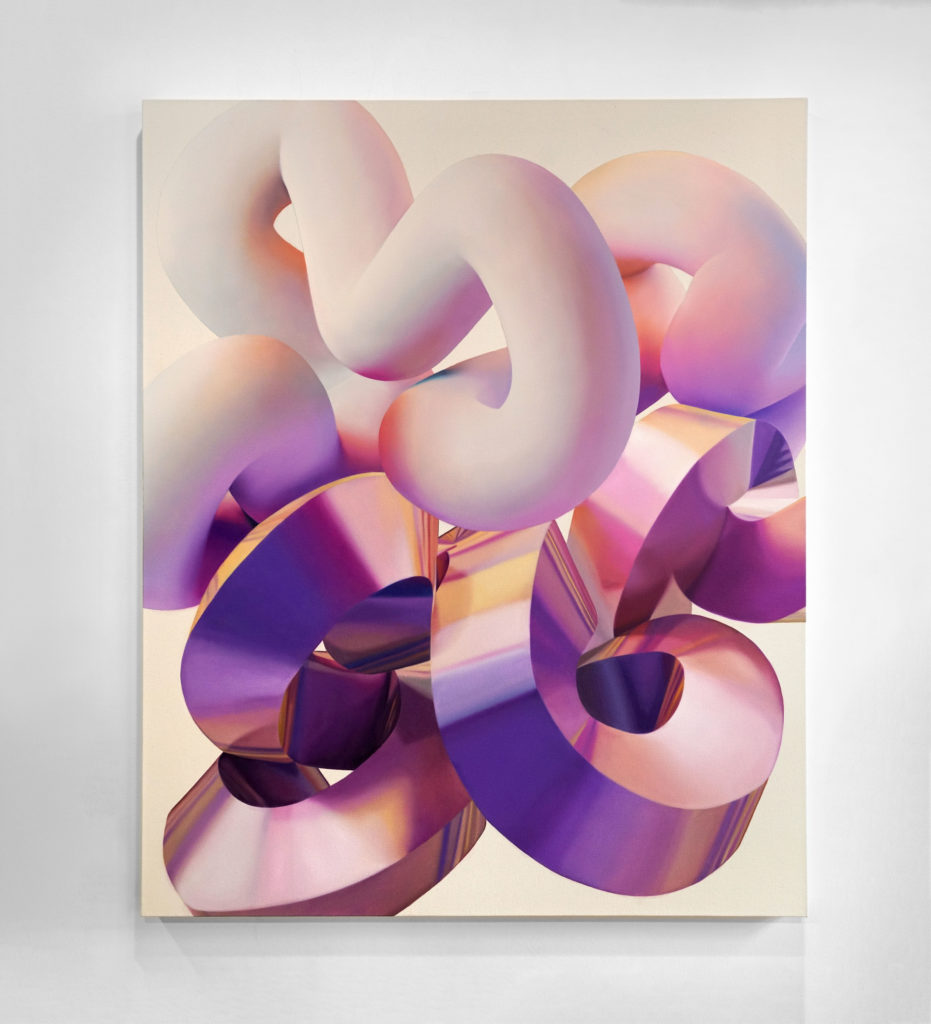
Since 2022 I have also been working on a series called the Gaze Paintings. In contrast to my regular working process, these paintings instead use data from eye-tracking software to directly visually map bezier curves. Eye tracking records subjective vision. In this case, my vision is I look upon canonical works by painters like Titian, Velázquez, Cabanel, and others.
Throughout history, painterly tropes such as the reclining nude have been intensely tied to the male gaze. These works aim to subvert such traditions by mapping my own gaze and translating it into an abstract representation of viewership. By deepening visual pathways and penetrating beyond the flat surface of the picture plane, this process reveals some hidden internal logic unique to each work I gaze upon.
What are your future projects?
My latest solo show, Metamorphoses is currently on at the UNESCO site of the Belvedere di San Leucio, Italy, until July 15th, 2023. I was so lucky to be able to respond to this historic museum and I highly recommend everyone to visit if you’re near Napoli this summer!

Interview by Fabio Pariante, Twitter / Instagram
